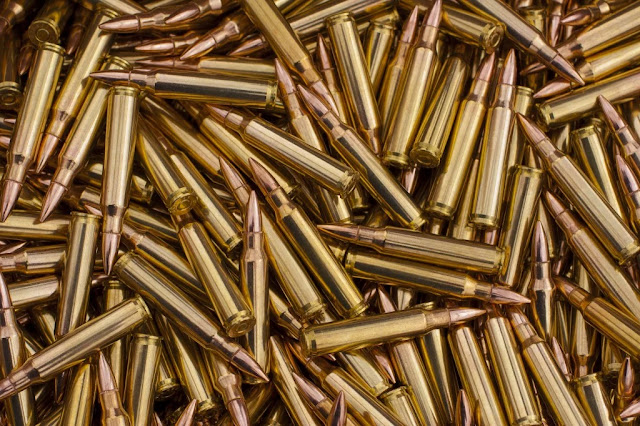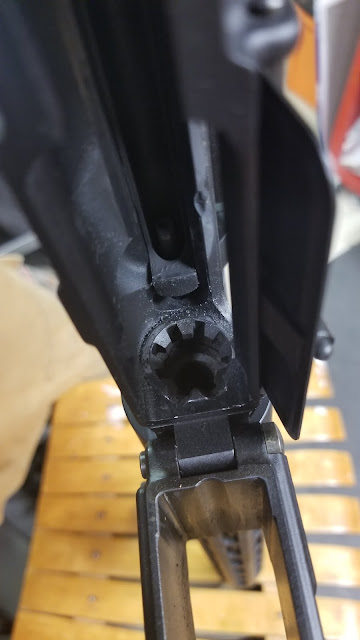5.56 NATO Ammunition Variants
Introduction:
First adopted in the early 60's for use in the United States' new M16 rifle, the 5.56x45mm round, now referred to as 5.56 NATO, has become one of the most prolific cartridges on Earth. Originally developed by Remington as the .223 Remington cartridge, it has been iterated over decades to add the effectiveness and results desired by today's modern militaries. Aside from specialty loadings like tracers, there are three main loadings of 5.56 NATO that are currently in use: M193, M855, and M855A1. Each loading was developed to meet certain requirements for wounding potential and penetration. I'll go into each round and try and highlight some of their unique qualities.
Details:
 |
| Source: https://magtechammunition.com/wp-content/uploads/2018/08/556A-cut.jpg |
We'll start with the simplest round, M193. M193 is just your basic 55 grain, full metal jacket (FMJ) round. The M193 bullet is comprised of a lead slug with a copper jacket. The advantage to this round is that it's very cheap to manufacture, and provides adequate wounding capability and penetration for most applications. This is pretty close to the .223 Remington round that was originally developed, but there are some differences. Dimensionally they're identical, however, M193 Ball ammunition is loaded to a higher pressure than its civilian counterpart. This means that 5.56 ammunition in general should only be used in firearms that are designed to handle it.
M855 Ball ammunition is significantly different from M193. The M855 round was originally developed by Belgium as the SS109 cartridge. It is a 62 grain, copper-jacketed bullet, with a steel penetrator in the tip with a lead plug behind it. This significantly improves the penetration of the round, while also creating a bullet that fragments in soft targets. M855 rounds are colloquially called "green tips" due to the fact that M855 rounds are distinguished from other rounds by the green paint on each bullet.
Because they contain a steel penetrator, many indoor ranges will forbid the use of M855 Ball ammunition, for fears of ricochets and damage to backstops.
M855A1 is the latest and greatest iteration for 5.56 NATO, and is the most interesting in my opinion. M855A1 was born out of a desire to create a lead-free "green" round that is also has greater penetration capability. The round is comprised of a hardened steel tip/penetrator, with a copper slug around and behind it.
 |
| Source: https://www.thefirearmblog.com/blog/wp-content/uploads/2016/07/M80A1070616-009_zpspcyumvzr.jpg |
The M855A1 provides really good penetration as well as fragmenting ability. Upon impacting a soft target, the copper jacket/slug strip off the steel penetrator and fragment, creating a significant wound. Part of the reason the round was developed was to provide greater penetration for use against opposing forces wearing body armor. This sounds like a good idea, until you see that the round doesn't seem to be able to penetrate the latest Russian military body armor plates:
Additionally, there are complaints of the hardened steel tip causing damage to soldiers' rifles in the field, specifically their feed ramps. So all in all, there are still some bugs to be worked out with the latest round, and there already workarounds being distributed to soldiers in the field, such as different magazine followers.
Conclusion:
Overall, the 5.56 NATO round has, much like the M16 and its variants, been battle-proven and continuously improved over its many decades of service. However, due to its shortcomings at the ranges encountered by many troops in Afghanistan, the military is actively seeking a replacement round that can fit the bill. However, the range and weight requirements are not easy to beat, so the 5.56 could conceivably remain the standard round for the military for many years to come.




Comments
Post a Comment